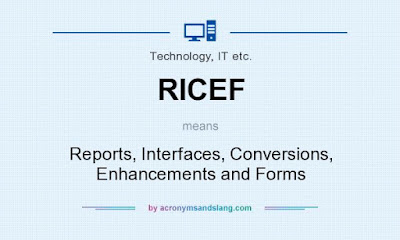SAP New GL Configuration Document (E-Book)

Anything you Should Know About 'SAP'
 Functional specifications (functional specs), in the end, are the blueprint for how you want a particular report and transaction to look and work. It details what the report will do, how a user will interact with it, and what it will look like. By creating a blueprint of the report or transaction first, time and productivity are saved during the development stage because the programmers can program instead of also working out the logic of the user-experience. It will also enable you to manage the expectations of your clients or management, as they will know exactly what to expect.
Functional specifications (functional specs), in the end, are the blueprint for how you want a particular report and transaction to look and work. It details what the report will do, how a user will interact with it, and what it will look like. By creating a blueprint of the report or transaction first, time and productivity are saved during the development stage because the programmers can program instead of also working out the logic of the user-experience. It will also enable you to manage the expectations of your clients or management, as they will know exactly what to expect. Indicates
DP is at header level
Indicates
DP is at header level
Menu
Path
|
Accounting ® Financial Accounting ® Accounts Payable ® Document entry ® Outgoing payment ® F-53 - Post
|
Transaction
Code
|
F-53
|

Field Name
|
Field Description
|
Values
|
Document date
|
Date the transaction occurred
|
Example: 18.11.2012
|
Company code
|
Code identifying a separate legal
entity for which a separate set of accounts is maintained for external
reporting purposes
|
Example: UII
|
Posting date
|
Date that the business
transaction occurred
|
Example: 18.11.2012
|
Currency/rate
|
Code identifying the currency
used in the transaction
|
Example: IDR
|
Reference
|
Vendor document reference,
like invoice number
|
Example: Free
Text
|
Account
|
Code identifying the General
Ledger account
|
Example: 1111112100
|
Amount
|
Amount of a payment
|
Example: 1000000
|
Value date
|
Today's date
|
Example: 18.11.2012
|
Account
|
Code identifying the Vendor
account
|
Example: 1001500
|